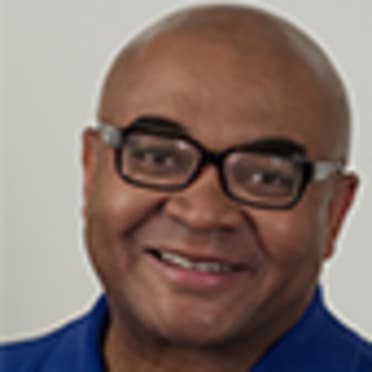Helton, Walker lead Rockies on Hall ballot
DENVER -- Will the interlocking CR logo -- heck, even the designation “COLORADO, N.L.” -- finally appear on a National Baseball Hall of Fame and Museum plaque in 2020?
The 2020 Hall of Fame Ballot, released Monday, includes outfielder Larry Walker, who represents the best (but not certain) chance for a franchise that has played for 27 seasons to finally get representation among Cooperstown’s honored members. It’s Walker’s final year of eligibility. Also, first baseman Todd Helton, the only one of the club’s player alumni to have his jersey number retired, is on the ballot a second year.
To earn induction, a player must be included on 75 percent of Baseball Writers' Association of America voter ballots.
No Hall of Famer has ever appeared in a game with the Rockies, not even a star at the very end of his career. There is a slight chance of that, should the game’s Modern Era Committee – which reexamines players overlooked by BBWAA writers eligible to vote – honor former outfielder Dale Murphy, who spent the last 26 games of his 18-season career in purple pinstripes.
But much of the effort this year is behind Walker, who spent 10 of his 17 seasons with Colorado (1995-2004) and accomplished many of the feats that earned him consideration.
At the start of the fifth of his six seasons with his first team, the Montreal Expos, Walker played in the Rockies’ first home game -- at Mile High Stadium on April 9, 1993. The game is remembered in Denver for Eric Young’s leadoff homer off Kent Bottenfield, and the Rockies’ 11-4 victory. But ringing, sweetly it turned out, in Walker’s ears was the roar of the MLB-record 80,077 in attendance. As soon as free agency hit after 1994, he signed with the Rockies.
Walker became the Rockies’ first and, so far, only National League Most Valuable Player Award winner in 1997. He represented the team in four of his five All-Star Games, won five of his seven Gold Gloves and two of his three Silver Sluggers. Plus he won three NL batting titles for the Rockies (1998, 1999, 2001).
The disregard of stats compiled at Coors Field has stood as a deterrent at times during Walker’s candidacy, especially with a crowded ballot in recent years. But there may be less a crowd, with 19 players having been inducted since 2015. Walker, whose rate of ballot checks has been all over the place, experienced a 20.5 percent leap from 2018 to his high-water mark of 54.6 percent in 2019.
An old franchise policy against retiring numbers until a player is in the Hall of Fame was relaxed in 2014 for Helton, who spent all 17 of his seasons in a Rockies uniform. Walker, who played for the Expos, Rockies and Cardinals, still hasn’t had his No. 33 retired. But the only time it has been issued during the regular season was after fellow Canadian Justin Morneau received permission from Walker to wear it in 2014-15. Whether his number not hanging for all writers to see when they come to Coors Field has hurt Walker is conjecture.
But the last of couple years the franchise has gotten behind Walker, with a full information packet that has been sent to all voters and with campaigning on the Rockies and Rockies PR Twitter feeds.
The move is inspired by a successful campaign by the Mariners to earn induction last year for Edgar Martinez, who made it in his last year after dealing with skepticism over his primary position -- designated hitter.
Should Walker not make it this year, his evaluation falls to the Modern Era Committee. While that would seem favorable, it’s not a sure thing. Currently, former Tigers star second baseman Lou Whitaker hasn’t made it despite a 75.1 career WAR over 19 seasons. Interestingly, Walker managed almost as high a WAR in two fewer seasons at 72.7. By comparison, Derek Jeter, the Yankees shortstop and beloved captain who compiled a slightly lower at 72.4 WAR with far greater paying time, is considered a lock his first year on the BBWAA ballot.
Helton became a star in 2000, when he led the NL in batting average (.372), on-base percentage (.463), slugging percentage (.698) and OPS (.1.162). He retired with five All-Star Game selections, four Silver Sluggers and three Gold Gloves. He also served as a leader in production and the undisputed inspirational leader of the 2007 club that made the World Series.
But back problems toward the end of his career slowed his production. Even though he had no control over poor pitching and rebuilding periods in the middle and at the end of his career, it’s possible he is penalized because the Rockies had the Majors’ sixth-worst record during his career. And there was Coors Field, where Helton’s .193 difference from his OPS on the road was fifth-greatest among retired players (minimum 7,000 plate appearances), according to research done by FanGraphs' Jay Jaffe.
Walker's home-road OPS split was third-greatest. However, seven of the top 10 in this category are Hall of Famers.
Helton, who received 16.5 percent of the vote last year as a first-time eligible, has time. Like Walker, he stands to benefit from seemingly a less-crowded ballot. Unlike Walker, whose numbers were reexamined late in his candidacy, the modern tools for evaluating stats and trying to put them in context with park effects could help his candidacy receive a fuller look than the early portion of Walker’s.

